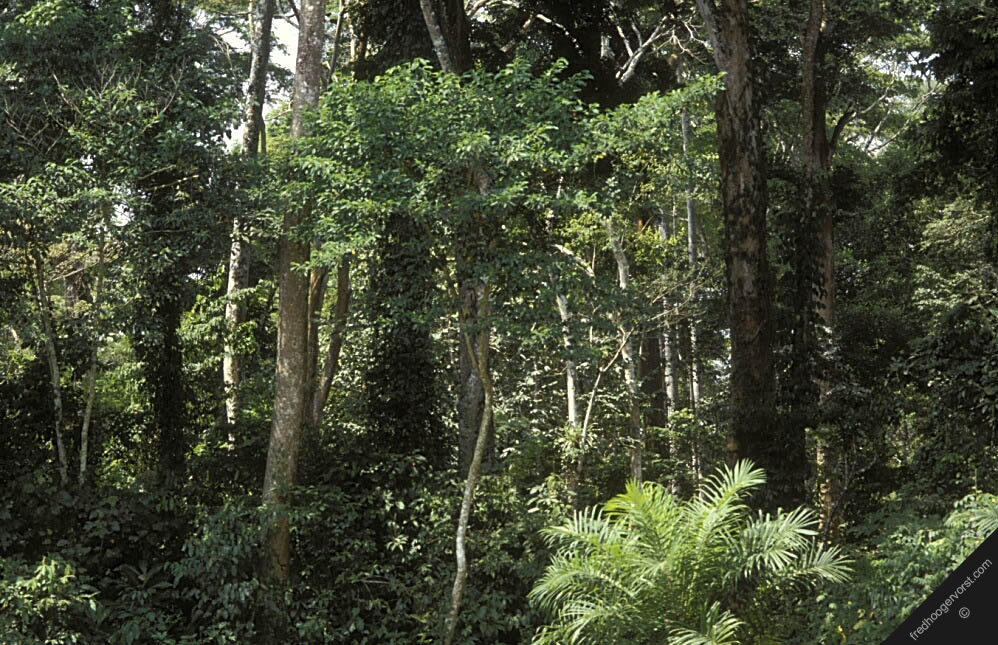Habitat and Geography
The okapi are native to the Ituri
Rainforest in the Democratic Republic of Congo. The forest
covers roughly 24,300 square miles in the northern part of the
Congo River Basin (The Living Africa, 1998). Its boundaries are
difficult to define since the forest blends into other forests
and swamp regions that surround it to the south and the east
(The Living Africa, 1998). A savanna borders the rainforest to
the north and a rift valley to the west. In the forest the okapi
prefer altitudes of 500-1000 feet above sea level but sometimes
venture to areas higher than that (Lindsey, 1956). 
Ituri is one of Africa’s most
biologically diverse regions. Along with the okapi it is also
home to 445 other known species of animals, especially mammals
like the
African Elephant and
Hippopotamus.
(Wildlife Conservation Society, 2013). As well as having a many
different animal species it also is home to a large variety of
plant life. In just one 100-acre block of forest over 720
different species of trees and vines can be observed (Wildlife
Conservation Society, 2013). Some species can only be found in
this area such as the rainforest giraffe, the okapi, the forest
buffalo, and seventeen species of primates.
One area in particular, The Okapi
Wildlife Reserve, is home to more okapi than other regions of
the forest. About 1/5 of the forest is made up of the Okapi
Wildlife Reserve. An estimated 10,000-20,000 okapi live in the reserve
with several other endangered species (Okapi Preservation, 2011). Normally the okapi prefer
to stay in the more heavily forested areas of the reserve,
however they also are observed in nearby riverbeds (Rainforest
Alliance, 2013). Some of the rivers that flow through the reserve
are the Ituri, Nepoko, and Epulu rivers. Along with these
animals, the Okapi Wildlife Reserve is also populated by
hunter-gatherers from both the Mbuti and the Efe ethnic groups
(African Natural Heritage, 2009).
The forest floor largely consists of
roots because of the large amount of trees. Because of this some
areas of the forest are impassable by foot (The Living Africa,
1998). A thick canopy of leaves only allows small amounts of
sunlight to reach the floor. Patterns that the filtered sunlight
makes greatly help the okapi’s camouflage (Bodmer and Rabb
1992). It also makes growth for smaller vegetation on the forest
floor difficult.
The Ituri is very humid and receives
large amounts of precipitation. During an average year the Ituri
Rainforest receives about 75 inches of rain (The Living Africa,
1998). The most rainfall occurs during the months of October and
November. Flooding is common during those months, which makes
traveling along the forest floor difficult. In December and
February there is a dry season. Less than 7 inches of rain falls
during these months. The average temperature is 88 degrees
Fahrenheit (The Living Africa, 1998). Humidity in the Ituri
rainforest stays around 85%.
Ituri is in many ways similar to
other rainforests throughout the world. It has high
temperatures, humidity levels, and rainfall. The large variety
of trees and animal species in it is also much like other
rainforests. It is the rare and endangered species that live
within it, such as the okapi, that set it apart.